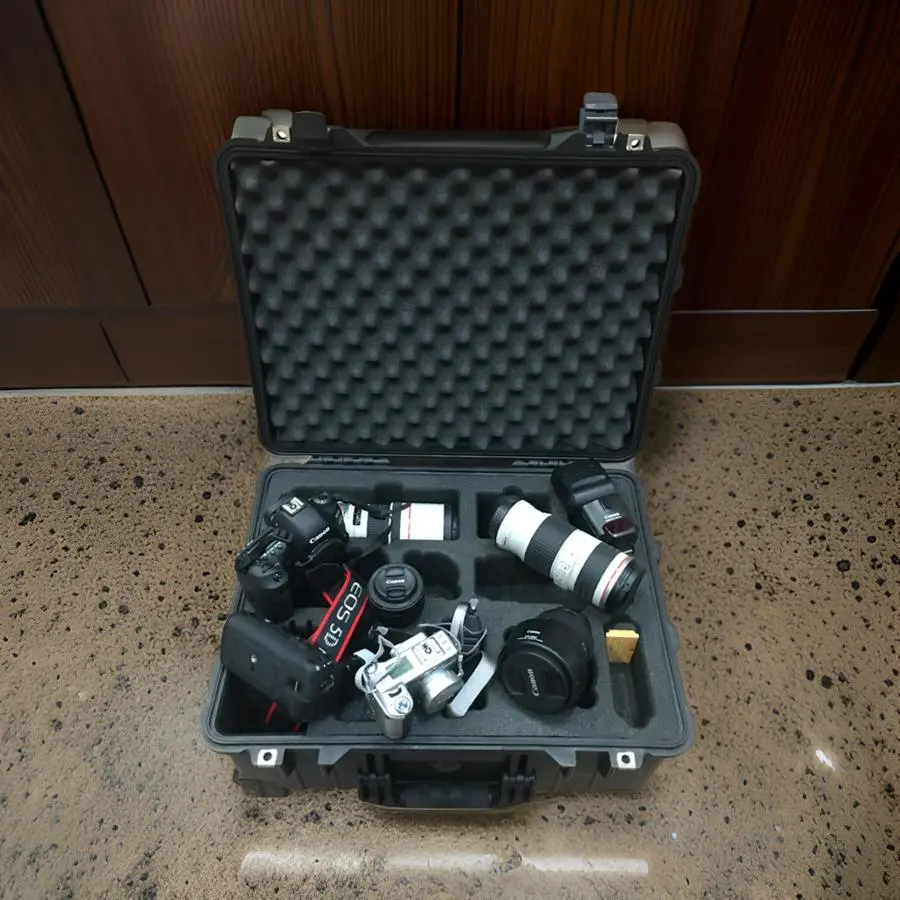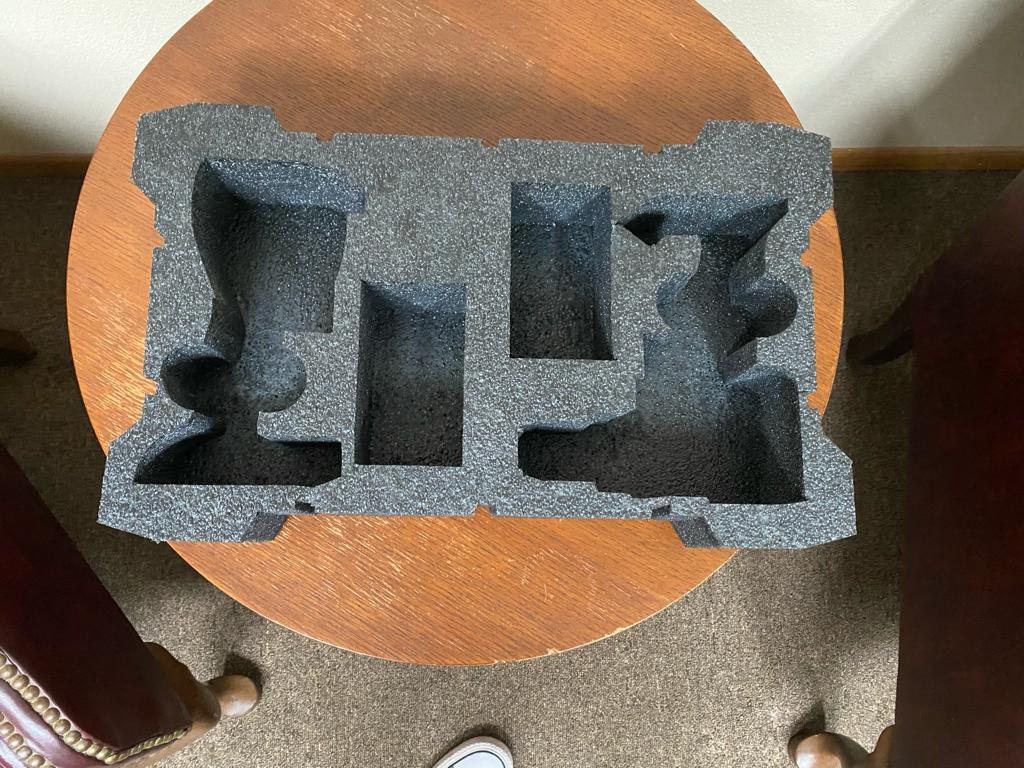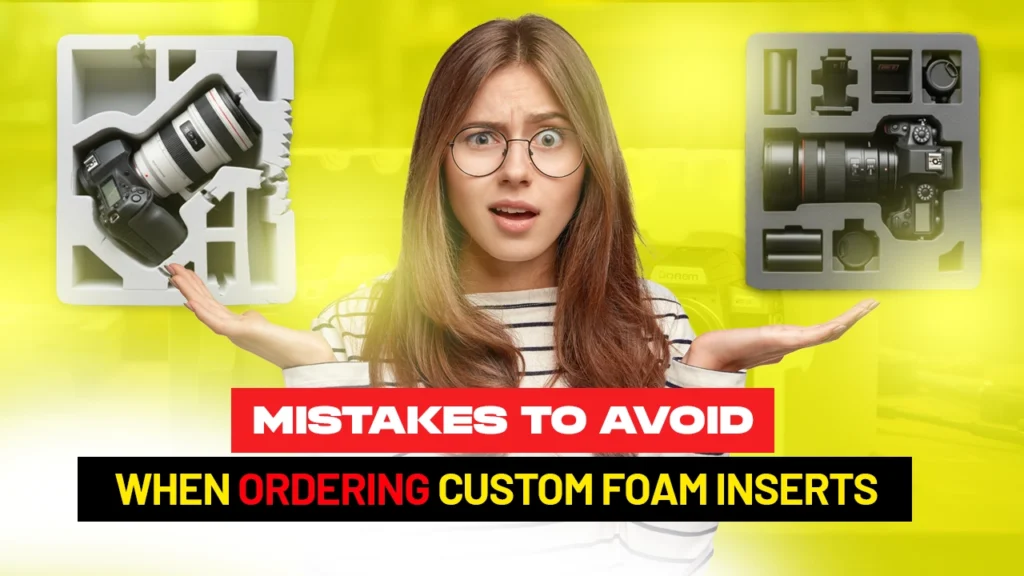When ordering custom foam inserts, one of the biggest mistakes is choosing the wrong material, design, or size. These errors can lead to poor protection, wasted money, and damaged products. Whether you’re packaging delicate electronics, heavy tools, or anything in between, avoiding these common mistakes will help you get the right fit, durability, and value from your inserts.
Let’s explore the most common problems customers face and how to avoid them.
Picking the Wrong Foam Material
Not all foam is the same. Different products need different types of protection. For example, a soft and delicate item like a camera lens needs cushioning, while a heavy tool needs strong, firm support.
Common mistake:
Choosing foam that’s too soft or too hard.
What to do instead:
- Use Polyurethane (PU) foam for lightweight, delicate items. It offers soft cushioning.
- Use Polyethylene (PE) foam for heavy or bulky items. It holds shape and gives strong support.
- For moisture resistance or better durability, ask about cross-linked PE foam.
Tip: Talk to your supplier about your product type, weight, and how it will be used or transported. This will help you pick the right foam type.

Providing Wrong or Incomplete Measurements
If the foam insert is too small, your product will move around and may get damaged. If it’s too tight, it might be hard to place or remove the item, or worse—it could break.

Common mistake:
- Guessing the size or sending rough dimensions.
What to do instead:
- Use exact measurements of your product, including any accessories.
- Send a sample or 3D drawing if possible.
- Don’t forget to include height, width, depth, and allow a bit of space for easy handling.
Tip: Double-check measurements before placing your order.
Ignoring Usability and Handling
A foam insert may protect your item, but it also needs to be easy to use. If your customers or team struggle to remove or insert the product, it can lead to frustration or damage.
Common mistake:
No space or grip area to lift items out of the foam.
What to do instead:
- Ask for finger notches, pull tabs, or angled edges to make removal easier.
- For kits with many parts, use color coding or labels inside the insert.
Tip: Test with a sample if possible. A good insert should protect AND be user-friendly.

Forgetting About Environmental Factors
Where and how your product will be used matters. Foam that works well indoors may not perform the same in heat, cold, or humidity.
Common mistake:
Ordering standard foam inserts for special environments.
What to do instead:
- Let your supplier know if the insert will be used outdoors, in hot or cold places, or around water or chemicals.
- Choose foam with added resistance to moisture, heat, static, or UV light if needed.
Tip: Mention these needs early in the design process so the correct material can be used.
Skipping the Prototype Stage
Jumping into full production without testing your insert design is risky. Small mistakes can become expensive if they’re repeated in every piece.
Common mistake:
Not ordering a sample before bulk production.
What to do instead:
- Ask for a prototype or sample insert to test fit and usability.
- Check how your product sits in the foam—too tight, too loose, or just right.
Tip: Fixing a problem in one sample is much cheaper than redoing hundreds of inserts later.

Over-Customizing Without Need
Customization is great, but going overboard can drive up costs. Some features look nice but may not be necessary for protection or function.
Common mistake:
Adding too many shapes, layers, or special features that don’t serve a purpose.
What to do instead:
- Focus on what your product actually needs—support, protection, ease of use.
- Use simple layouts when possible.
- Avoid extra cutouts, colors, or multi-layer designs unless they add clear value.
Tip: Ask your supplier to suggest ways to reduce costs without affecting performance.
Not Thinking About Shipping and Packing
Even the best foam insert can become a hassle if it’s hard to pack, stack, or store. Consider how your packaging will be handled during shipping and daily use.
Common mistake:
Designing foam inserts that are awkward to use in the real world.
What to do instead:
- Make sure your insert fits perfectly into its box or case.
- Keep the design simple and fast to load or unload.
- If you ship in bulk, ask for stackable or modular designs.
Tip: Think about the end-user experience. A smooth packing process saves time and labor.
Forgetting About Certifications or Industry Requirements
In some industries—like medical, aerospace, or military—materials need to meet safety or legal standards. Using non-approved foam can get your shipment rejected.
Common mistake:
Ordering foam without checking if it meets regulations.
What to do instead:
- Ask about certifications like fire resistance, static control, or FDA approval.
- Share your industry standards with the foam supplier.
Tip: Get proof of compliance (like certificates) before production.
Quick Checklist: Order Your Custom Foam Inserts the Right Way
- Choose the right foam material (PU, PE, or cross-linked)
- Measure your product carefully and double-check
- Add easy-to-use features like finger notches or pull tabs
- Mention if your product faces heat, cold, or moisture
- Request a sample or prototype before bulk production
- Keep customization practical and within your budget
- Design for easy shipping, stacking, and storage
- Check for required certifications or industry rules
Final Thoughts
Ordering custom foam inserts doesn’t have to be difficult. But getting it wrong can lead to wasted money, poor product protection, and unhappy customers. By avoiding these common mistakes, you’ll make smarter decisions and get foam inserts that truly meet your needs.
At Custom Foam Parts, we help you every step of the way—from choosing the right foam to designing inserts that protect and impress. Whether you’re shipping fragile tech, organizing toolkits, or building retail displays, we’ve got the experience and solutions to get it right the first time.
FAQs – Ordering Custom Foam Inserts
What is the most common mistake people make when ordering custom foam inserts?
The most common mistake is choosing the wrong foam material. Each product requires a specific foam type based on its size, weight, and fragility. Using the wrong material can result in poor protection or product damage during shipping.
How do I know which foam type is right for my product?
You should consider the weight, shape, and sensitivity of your item. For example, lightweight and fragile items usually need soft polyurethane (PU) foam, while heavier items are better supported by denser polyethylene (PE) foam. A professional foam supplier can guide you in selecting the best option.
Can I order foam inserts without sending exact measurements?
It’s not recommended. Inaccurate or incomplete measurements can lead to loose-fitting or tight inserts that don’t protect your product properly. Always provide precise dimensions or, if possible, a sample or 3D drawing of the item.
Is it necessary to order a prototype before full production?
Yes, ordering a prototype is a smart step. It helps you test the fit, usability, and design of the foam insert before committing to a full order. Catching small issues early can save time and money.
What should I tell the supplier if my product will be used outdoors or in extreme conditions?
Let the supplier know if your product will face heat, cold, moisture, or chemicals. This information helps them choose a foam material that won’t break down or lose performance in those environments.
Need help with your next project?
Contact our expert team today and get a quote on your custom foam insert!
Contact US
